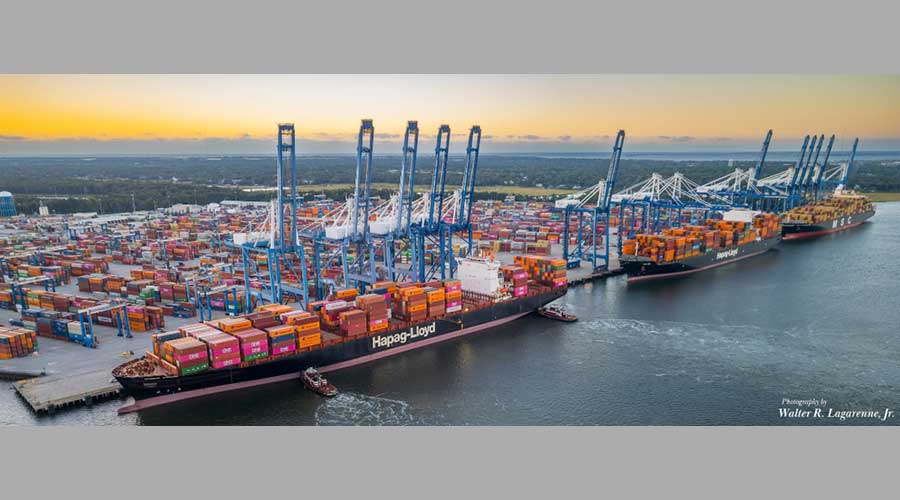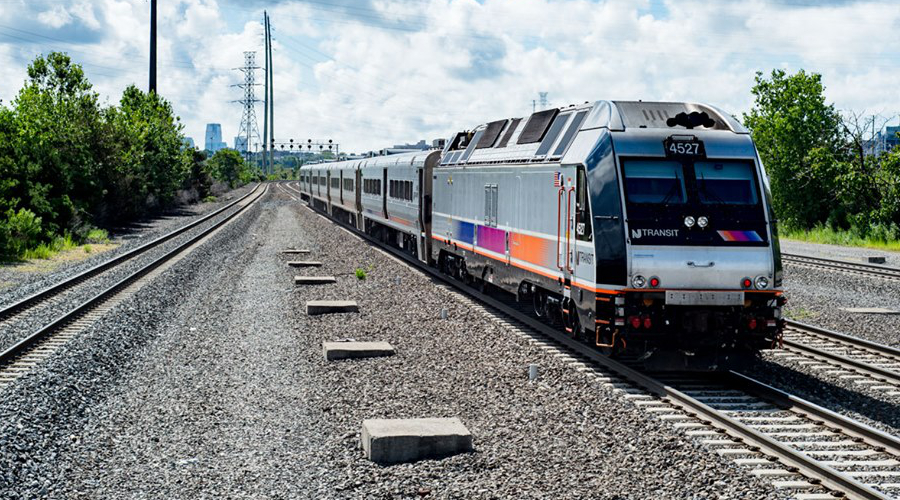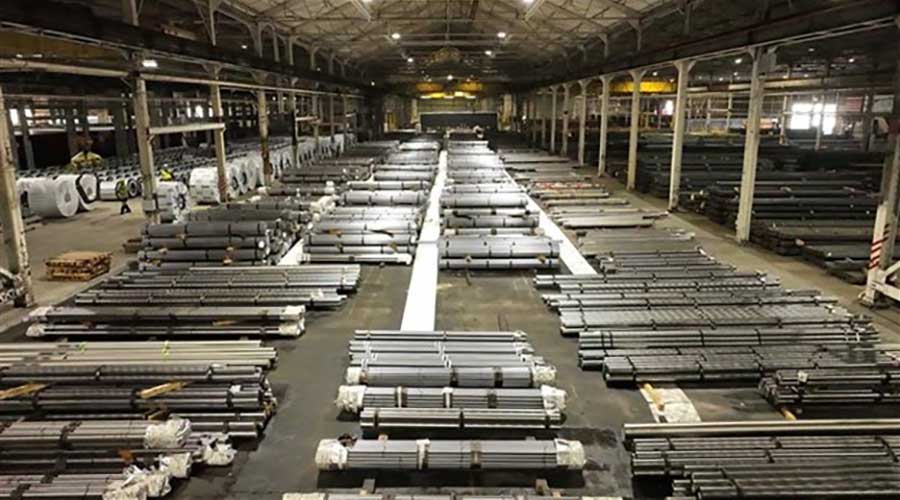Stay updated on news, articles and information for the rail industry
 railPrime
railPrime
5/10/2023
Rail News: Intermodal
Whatever the intermodal weather, ports and their supply-chain partners aim to stay the prep-for-growth course
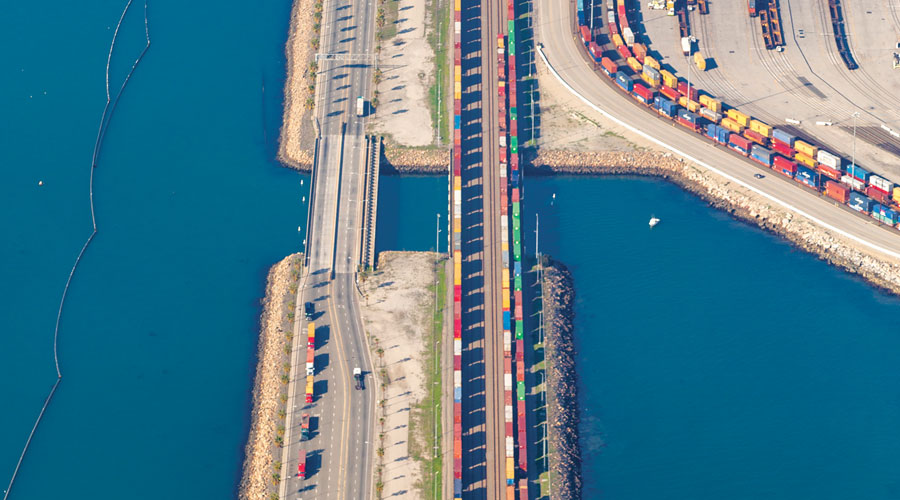
By Grace Renderman, Associate Editor
North American intermodal volume continues to lag in 2023, and it isn’t likely to rebound anytime soon.
In the year’s first quarter, total volume fell 8.6% compared to the level in the same quarter in 2022, according to Intermodal Association of North America (IANA) data. The number of domestic and international containers sank 5.8% and 8.8%, respectively, while trailer volume logged the biggest loss at 28.8%.
All seven high-density trade corridors IANA tracks — which collectively carry 60% of total North American intermodal volumes — posted declines. The south central-southwest corridor logged the biggest deficit at 19.2%.
The decline follows a trend that began last year. Total intermodal volume fell 3.6% year over year in Q4 2022, including a 4.2% drop in domestic containers and a 29.7% plunge in trailers, according to IANA.
What’s driving the volume decline? Factors range from the pandemic-induced supply-chain crisis to a widespread labor shortage to an unusual surge (and subsequent lack) of consumer demand over the past three years, says transportation analyst, consultant and Progressive Railroading columnist Tony Hatch.
Regarding the now-fickle consumers: U.S. retail sales fell 1% in March, according to the National Retail Federation (NRF). Although inflation has eased since a 40-year high in mid-2022, pressures from increased prices and higher interest rates are prompting a pull back to a services-led economy rather than a goods-led one, NRF officials believe.
Meanwhile, retailers have gathered excess inventory due to over-ordering prompted by a surge in consumer demand in the early days of the pandemic, creating a hitch in typical goods flow.
For the various links in the intermodal chain, this year’s volume figures tell the story — especially rail traffic. Through 2023’s first 16 weeks, U.S. railroads reported 3,723,234 intermodal units, down 10.9% year over year, according to Association of American Railroads data.
Lower freight volumes were the main culprit for railroad intermodal partner J.B. Hunt Transport Services Inc.’s first-quarter revenue decline of 7%, company officials said during an April 17 earnings call. As J.B. Hunt President Shelley Simpson put it: “Simply stated, we’re in a freight recession.”
North American ports certainly haven’t been immune.
Through March, cargo volumes at a number of ports were down by double-digit percentages — from the ports of Los Angeles and Long Beach to the Port of Vancouver to the Port of Virginia. Exacerbating things for U.S. West Coast ports: shutdowns and snags during the year-long negotiations with the International Longshore and Warehouse Union (ILWU), which has prompted some shippers to find route alternatives.
Some ports have been able to leverage the cargo flow volatility and minimize their own volume declines. Other ports are focusing on ways to be more resilient — whether it’s redoubling their efforts to regain lost market share, expanding port operations to serve customers 24/7, completing long-planned (and some new) infrastructure upgrade projects, or launching new services and entering new markets.
Yes, volumes certainly need to recover a bit, says John Gray, AAR’s senior vice president of policy and economics.
“But that’s not a challenge as much as it is an opportunity,” he says.
Officials at North American ports see a half-full glass, as well, and they’re pushing ahead. And freight recession or not, they’ll keep on pushing. Like every link in the intermodal chain, they don’t have a choice.
“They have to be ready when that business comes back,” Hatch says. “They can’t say, ‘Oh, we didn’t expect an economic recovery.’”
The West Coast struggles
L.A. and Long Beach port leaders have been preaching resiliency for some time now. Among the hardest hit links in the chain since the pandemic began, the twin ports long had been the top two U.S. ports in terms of total cargo volume until the Port of New York and New Jersey (PANYNJ) usurped them for five months during the past year. That signaled a major market shift where it’s more logical to use East Coast ports, Hatch says.
PANYNJ recorded more 20-foot equivalent units (TEUs) than either West Coast port in August, September, October and November 2022, and then again in March 2023. The L.A.-area ports now are focusing on regaining that lost market share.
The biggest obstacle: the negotiations with the ILWU, which represents more than 22,000 dockworkers at 29 ports. The parties have been at the table since May 2022; the previous contract expired in July 2022. Port of L.A. Executive Director Gene Seroka announced progress on key issues in late April, but no agreement had been reached as of press time.
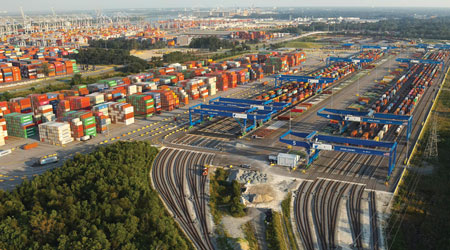
Dockworkers are responsible for loading and unloading the vessels at each port — meaning if they aren’t working, goods aren’t flowing. Between April 6 and 7, the union’s members were idle for nearly 24 hours, forcing the L.A. and Long Beach ports to shut down operations because they didn’t have enough workers.
The tension/uncertainty has prompted shippers to seek alternative routes through East Coast and Gulf Coast ports. Combined with pandemic-related congestion, ports in the West have been a hard sell for customers both new and returning.
The L.A. port logged near record-high dwelling cargo volume in 2022, at one point reaching 22,000 TEUs sitting on the docks, Seroka says. Since the backlog has mostly disappeared from his port, his priority is renewing confidence in the supply chain and convincing shippers to return to the West Coast.
“The biggest challenge … is capturing a strong share of the discretionary market. Cargo moving to Chicago, Memphis, Dallas, Columbus, St. Louis [or] Kansas City can go by any port in the nation today,” Seroka says. “It’s the volition of the importer and exporter [who] make those decisions along with their shipping lines. We’ve got to be the gateway of choice.”
At the Long Beach port, Executive Director Mario Cordero is focused on a different approach: expanding operations to 24/7. Such a framework would help U.S. ports stay on level with other ports around the world, such as those in East Asia, where many already operate around the clock, he says.
As part of a federal push to address a growing backlog of Chinese imports on the West Coast, the twin ports introduced a 24/7 operating model in the second half of 2021 — but operations soon went back to typical business hours.
“Our focus is to talk about cargo velocity, as opposed to cargo volatility, which has been the talk of the nation,” Cordero says. “We’re focused on continuing investment in our infrastructure, and … I’ve indicated that we need to transform our operations.”
Inland markets and infrastructure upgrades
Other ports also continue to push the infrastructure investment envelope. Witness the Georgia Ports Authority (GPA), which governs ports in Savannah and Brunswick and a handful of inland transload operations. In March, the Port of Savannah handled 367,880 TEUs, down 17% year over year.
GPA is wrapping up the $220 million Mason Mega Rail project that will add 97,000 feet of new track (making a total of 34 miles) to Savannah’s Garden City Terminal. The project will double the port’s annual rail-lift capacity to more than 1 million containers. Mason Mega Rail will help the port achieve better cargo velocity and efficiency and reach more inland markets — from Dallas to Memphis to the U.S. Midwest — via CSX and Norfolk Southern Railway service, says Duke Acors, GPA’s director of strategic operations.
The project is a major component of the “Network Georgia” plan to move containers to inland markets, says Acors. GPA expects significant growth in volume and warehousing capacity — there’s 100 million square feet of warehousing space surrounding Savannah alone, he adds.
While flexibility and consistency have always been critical for shippers, they’re more important than ever since the onset of the pandemic, freight movers say. For ports, it’s meant finding ways to load and unload goods quicker and minimize delays. To that end, the Port of Savannah has achieved an average container turnaround time of 24 hours from vessel to rail car, Acors says.
“Trucking rates can be very volatile at times, and the lower they get, the more customers may shift some of their discretionary volume from intermodal [rail] to truck,” he says. “We’re working closely with ocean carriers and our rail partners to increase rail cargo to current inland destinations.”
More than 3,000 miles away, the Port of Vancouver in Canada also is focusing on major infrastructure and capacity upgrades. The port’s largest project — the CA$2 billion Roberts Bank Terminal 2, a marine container terminal with three berths and 2.4 million TEUs worth of capacity — was just approved April 20 after a lengthy environmental review process. Construction will take six years to complete.
Improving first- and last-mile transportation infrastructure is the port’s No. 1 priority, says Peter Xotta, the Vancouver Fraser Port Authority’s VP of operations and supply chain. The authority has more than CA$1 billion worth of projects planned to eliminate grade crossings on lines approaching the port’s terminal facilities to increase efficiency and allow longer trains. The port has eliminated 14 crossings in the past decade, he says.
The port also is seeking to “illuminate pain points” in the cargo movement process through digital infrastructure, including Vancouver’s GPS program. Equipping trucks and trains with GPS sensors helps track the flow of goods and identify where bottlenecks occur. Since launching the program nearly a decade ago, the port has been able to process a container at its intermodal facilities in less than an hour, Xotta says.
Given the current unpredictability of consumer demand, maintaining fluidity remains a challenge. More predictable demand “drives confidence in investment, whether that’s in terminal facilities or in rolling stock,” Xotta says.
“But it also means that we can deliver a consistent level of service for users of the gateway, which is everyone’s goal,” he adds.
Growth in diversification
Providing consistent service is also critical if you’re aiming to serve new markets.
“All across the chain, we have to become more customer-friendly, more user-friendly, and part of that is moving goods as efficiently as we can through [your] piece of the supply chain,” says Todd Tranausky, VP of rail and intermodal for FTR Transportation Intelligence.
Enter the Port of New Orleans (NOLA), which is mulling market expansion — from the U.S. South (Dallas, Memphis) to the Midwest (Kansas City, Chicago) to Toronto. A Dallas-Fort Worth expansion would be key for fluidity and higher cargo capacity, says Janine Mansour, NOLA’s general manager of business development.
The port — which specializes in agricultural exports — traditionally hasn’t focused on attracting importers. On average, exports take up 65% of total cargo volumes, but that has changed in recent years as importers have searched for a Plan B for their cargo coming from the West.
“It’s always challenging to get large corporations to shift their supply chains. I think the past few years have been eye-opening,” Mansour says. “A lot of shippers are realizing the need for diversification across port gateways.”
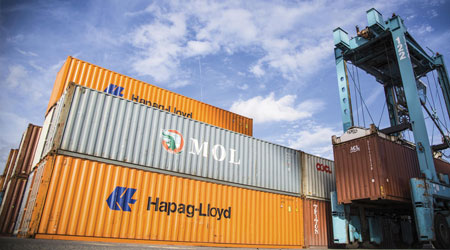
Boosting capacity will be crucial, she adds. The construction of new intermodal support yards will flesh out that capacity upgrade. Additionally, the new $1.8 billion Greenfield Container Terminal — to be served by NS — is slated to open in 2028 and will add 1.2 million TEUs in capacity at full buildout.
The project also will help attract more “sticky” cargo, or freight considered unlikely to be diverted to other ports.
“We’re quite bullish on intermodal growth,” Mansour says.
Port of Virginia officials are keen on sticky cargo, too. The port in March launched a new daily rail service to Tennessee on NS’ Crescent Corridor route, which terminates at the Class I’s intermodal terminal in Memphis.
Memphis is a market port leadership has been “eyeing for a number of years,” says Chief Sales and Marketing Officer Tom Capozzi. The project symbolizes the port’s next step in demonstrating its intermodal capabilities to ocean carriers and beneficial cargo owners, who accept cargo upon arrival at a port of entry, he says.
“We’re more or less marketing our ability to move the freight efficiently and quickly, and basically just provide better service levels, which we’ve been able to do extremely well over the last few years while other gateways were suffering some congestion,” Capozzi says.
Capturing sticky cargo will help the port weather economic uncertainty, says port spokesman Joe Harris. With rail playing a key role in future port development, relationships with railroads remain paramount, he adds.
“We focus on the things that we can control,” Harris says.
“Control” is a key word as ports try to build intermodal business amid a potential freight recession.
“Some of the reasons [intermodal is down] are beyond their control,” Hatch says. “But not permanently. What they can do is continue to invest in and demonstrate a consistency of service.”
Email comments or questions to grace.renderman@tradepress.com.
Contact Progressive Railroading editorial staff.


 2025 MOW Spending Report: Passenger-rail programs
2025 MOW Spending Report: Passenger-rail programs
 Gardner steps down as Amtrak CEO
Gardner steps down as Amtrak CEO
 Guest comment: Oliver Wyman’s David Hunt
Guest comment: Oliver Wyman’s David Hunt
 Women of Influence in Rail eBook
Women of Influence in Rail eBook






